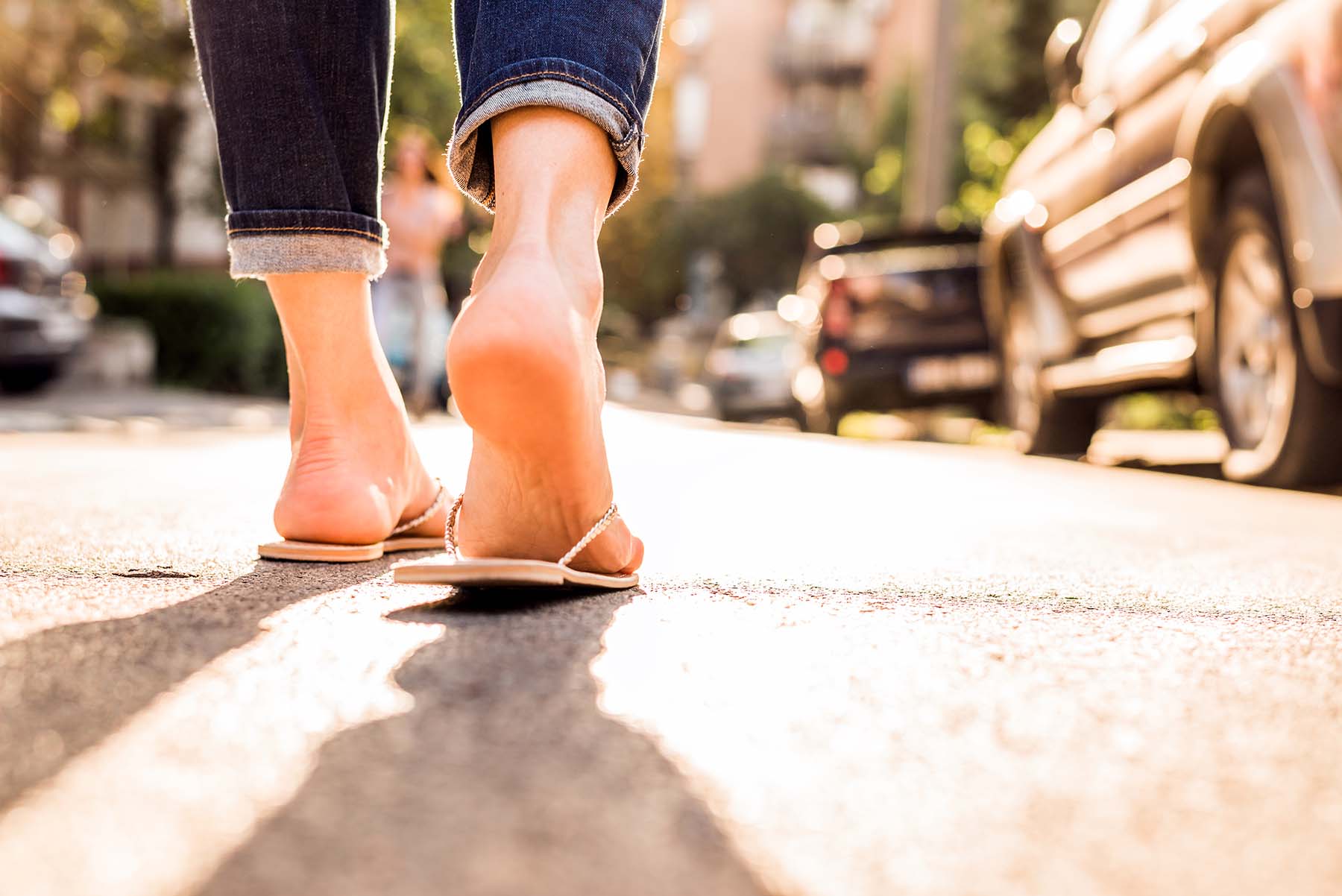Is It Okay to Wear Flip-Flops All the Time?

With the hot weather that permeates South Florida each summer (and let’s be honest — a good portion of the rest of the year), it’s understandable that people would flock to the airy ease and simplicity of flip-flops. After all, what’s not to like? You can slip them on and off without bending over, and your feet get to keep breathing in the heat.
Are flip-flops bad for your feet?
Now, before you begin thinking this article is going to ruin your favorite type of footwear, think again. “There is nothing wrong with wearing flip-flops on occasion,” says Jason E. Levine, D.P.M., a podiatrist with the University of Miami Health System. Where the problems arise, he says, is when people wear them at all times and in all terrains, regardless of what their day has in store.
“Sandals often do not provide sufficient support, shock absorption or protection to be used as everyday shoes,” says Dr. Levine. “This can lead to maladies such as plantar fasciitis, tendonitis, stress injuries, blisters and ankle sprains. People with diabetes are particularly at risk. Sandals can lead to increased dryness of the feet and do not adequately protect from cuts, both of which can lead to wounds and infection.”
However, flip-flops aren’t all bad. In fact, the Arthritis Foundation says that flip-flops (or going barefoot) can be beneficial for people with knee arthritis since they put less stress on the knees than more stable shoes like sneakers or clogs. The key is to use them only for short periods, like around the house or at the beach.
How to choose the right sandals
Of course, quality varies widely, even among different sandals and flip-flops. If you plan to wear them frequently, Dr. Levine recommends choosing a high-quality one.
“When searching for flip-flops or sandals, there are several things to consider,” he says. “One should ensure the fit is appropriate in length and width and look for a shoe with a thicker sole to provide shock absorption. Having a contoured arch will provide support for your foot’s arch and, finally, an adjustable ankle strap can serve to optimize stability.”
Regular inspection and replacement of old flip-flops and sandals with signs of wear can also go a long way toward keeping your feet healthy, says Dr. Levine.
Most experts agree that shoes should be replaced every 300 to 500 miles.
Dr. Jason Levine, podiatrist
When it comes to your other warm-weather footwear options, it’s all about choosing the right shoes for the task at hand. If you’re going to be on the move, then athletic shoes are always a good choice. Of course, boots may be appropriate if there’s a lot of work at hand or you’re going on a hike. Not surprisingly, the Arthritis Foundation found that high-quality, supportive flats are a better choice than high heels, low heels or even clogs.
To determine the quality of a shoe, Dr. Levine has three simple tests that he recommends:
- Bend it. Gently bend the shoe at the toes. If the shoe turns slightly but maintains its rigidity, it’s supportive. If the shoe easily bends in half, this is a sign of inadequate support.
- Twist it. Twist the shoe with one hand on the front of the toe box and another on the back of the heel. You are looking for a shoe with some resistance when manipulating it in this manner.
- Pinch it. Push forward on the back of the heel. The more difficult it is to push down, the more support it will provide.
As with most things, flip-flops are great when enjoyed in moderation. So feel free to keep them as a pivotal part of your warm-weather footwear wardrobe.
Wyatt Myers is a contributor to UHealth’s news service.
Tags: Dr. Jason Levine, flip flop shoes, foot pain, warm weather footwear
